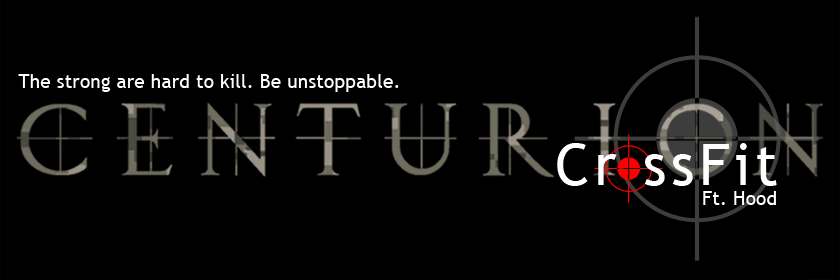Good info from http://www.hussmanfitness.org/html/TLEnergySystems.html
It reflects CrossFit's methodology of affecting all three metabolic pathways via one workout.
Your Four Energy Systems and How to Train Them
By John P. Hussman, Ph.D.
A good fitness program will train each of your energy systems. There are four of them. Don't give up on me here. This section is short, but important.
If you really want to understand how exercise produces changes in your body, it helps to know a little bit of biology. It will help you to understand exactly what you are trying to achieve in your workouts.
Whatever you eat and however you exercise, your body ultimately gets its energy from a little molecule called ATP (adenosine tri phosphate). It gets that name because it has three "phosphate groups" in it. Picture a little 3-leaf clover. When you pop one of those phosphate groups off, ATP gives off energy like a little Chinese firecracker, and is converted to ADP (adenosine di phosphate). The body then turns the ADP back into ATP, using fat or sugar (little chains of glucose called "glycogen") for the energy needed to put that third phosphate group back on.
Again, there are four ways that the body gets the energy to put that phosphate group back on, and they vary by speed, and by whether they burn oxygen or not. Remember - your objective is to train each system.
1) Explosive Force - The ATP-CP System
By far the fastest way to get that third phosphate group is to grab it off of a molecule called "creatine phosphate" or CP. When you are doing very explosive exercise for 10-30 seconds, such as an all-out sprint, the burst of energy is delivered by the ATP-CP system. Fast, doesn't require oxygen, but extremely limited to short periods of explosive force.
ADP + Creatine phosphate (CP) ==> ATP + Creatine
You train this system by including short wind sprints and relatively “low volume, high weight” resistance sets (4-7 repetitions of lifting and lowering a weight) into your program. You can support it nutritionally with by taking a creatine supplement with a small amount of apple juice or other sugar to assist transport into the cells.
2) Sugar Burning - Step 1 (Anaerobic Glycolysis)
The next fastest method of getting energy is to turn a sugar molecule into lactic acid. This doesn't require oxygen either. This system is effective for vigorous exercise of between 1-3 minutes in duration. When the intensity of the exercise requires more energy than what can be burned with the oxygen you are breathing, your body starts "partially" burning glucose “anaerobically” (without oxygen). This is the system you want to be using during "wind sprints". This is a system that has to be trained in order to get fast results, but again, this system can be used only for a limited period. As lactic acid builds up in your muscles, you start to feel them "burn". If you go beyond a few minutes of this, the acidity of the muscle tissue increases and the muscles start to have difficulty generating meaningful amounts of energy.
ADP + glucose ==> ATP + pyruvic acid (which converts to lactate if not burned with oxygen)
You train this system by including somewhat longer (1-3 minute) wind sprints and mid-range resistance training (8-12 repetitions) into your program. Since that work is also the basis of much of your muscle gain, you support it nutritionally with post-exercise protein, especially sources including the amino acid leucine, such as whey protein, and supplements including glutamine, vitamin C, and plenty of water.
3) Sugar Burning - Step 2 (Aerobic Glycolysis)
This is the next system, and for all practical purposes is the one you use most often when exercising. Once glucose has been converted to lactate anaerobically (without oxygen), the body then burns the lactate using oxygen to create even more ATP.
ADP + lactate + oxygen ==> ATP + water + carbon dioxide
You train this system by including sustained aerobic activity (20-40 minutes depending on intensity) into your program. You support it nutritionally by taking in some form of carbohydrate within 45-60 minutes after your workout. If you're targeting muscle gain more than fat loss, that post-workout meal is the only one that should generally include “high glycemic” carbs like bread, bagels, sugars, etc., since those carbohydrates will be used preferentially by the muscles at that time to rebuild glycogen.
4) Fat Burning (Aerobic Lipolysis)
This is by far the slowest system. It is, in fact, too slow to contribute extensively to energy production during exercise (if you ever deplete your glycogen stores so much that the body has to rely on fat burning for its energy, your muscle movement slows down dramatically). In order to mobilize fat, a "triglyceride" has to be broken down into fatty acids, bound to proteins, and other time-consuming feats. The good news is that fat metabolism is the main way that your glycogen stores are replenished after exercise.
Fat + oxygen + ADP ==> ATP + water + carbon dioxide
Though some trainers suggest long, slow aerobic workouts to burn fat, that's a very inefficient approach and can also compromise muscle gains. You train the lypolytic system best by working glycogen-depleting exercises like resistance training and wind sprints into your program (which give you an “afterburn” as you rebuild ATP through fat burning), working out in the morning on an empty stomach (in any case, definitely avoid sugary or high-glycemic carbs before workouts – insulin blocks fat burning), waiting about 30-60 minutes after the workout before having much carbohydrate, and by maintaining a nutrition plan of small meals that aren't large enough or glycemic enough to spike your blood sugar. You can also have a cup of caffeinated coffee (no cream or sugar) before workouts if it doesn't irritate your stomach – the caffeine triggers release of fatty acids into the bloodstream and will improve your endurance.

No comments:
Post a Comment